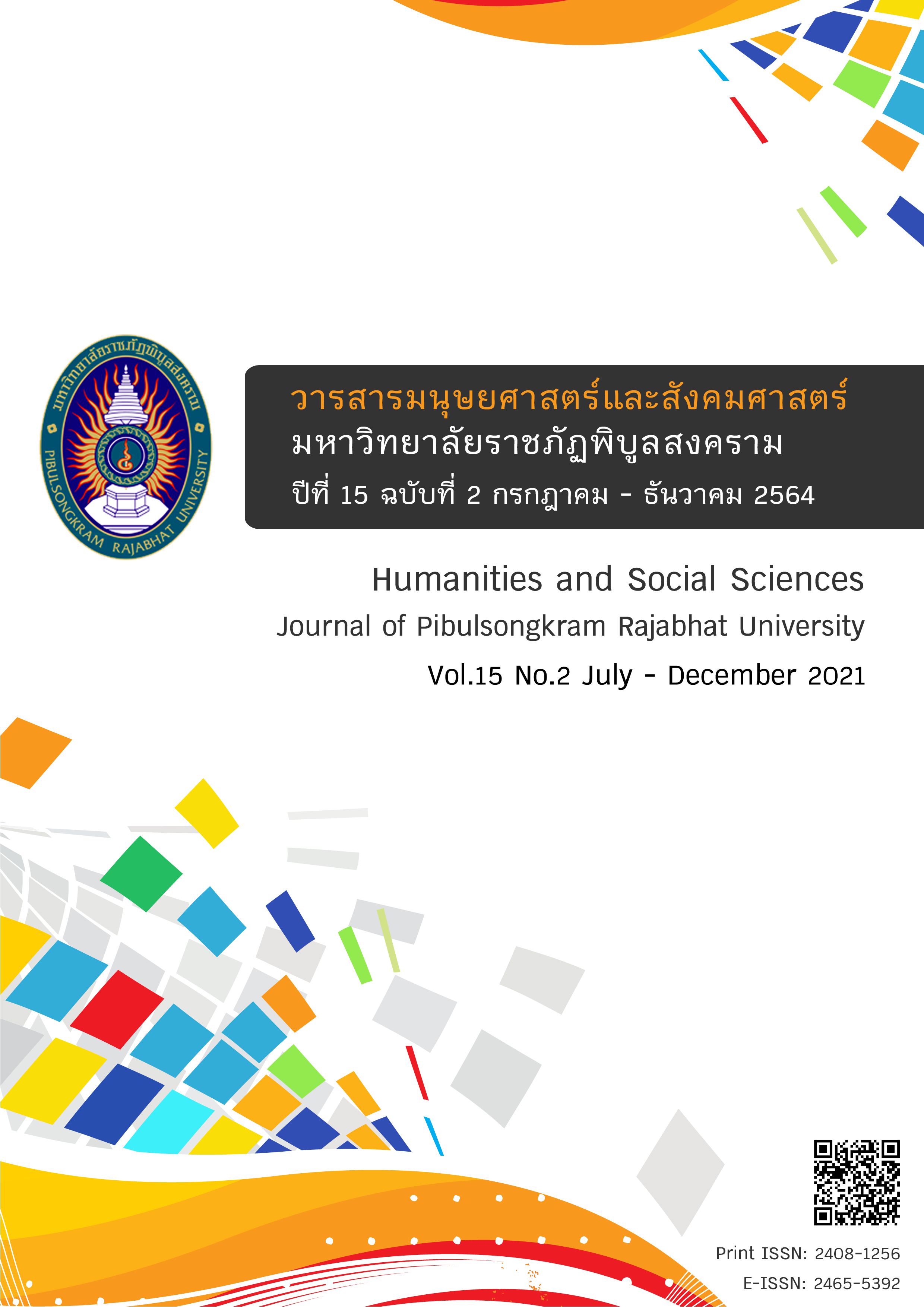Restoration and Development of Indigo-Dyed Cotton in Ban Na Muang Textile Handicraft Group, Phitsanulok via community participation
DOI:
https://doi.org/10.14456/psruhss.2021.40Keywords:
Indigo-Dyed Cotton, Community ParticipationAbstract
This study has objectives as follows: 1) to develop knowledge about indigo-dyed cotton to Ban Na Muang Textile Handicraft Group and 2) to develop, publicize, and evaluate the satisfaction of the indigo-dyed cotton product. The study procedures are 1) create knowledge about indigo-dyed cotton to Ban Na Muang Textile Handicraft Group, 2) design patterns of indigo-dyed cotton and develop products, 3) marketing promotion and product standards development, and 4) publicize the learning center of Ban Na Muang indigo-dyed cotton. Samples were selected by purposive sampling among Ban Na Muang Textile Handicraft Group. The total number of samples is 40. Tools in the study was interview forms, observation forms, and consumer satisfaction questionnaires towards products which used to collect data from 500 respondents. Then, data was analyzed for percentage, mean, and S.D. From the study, the knowledge development process from the practical transfer about indigo-dyed cotton with the community participation of Ban Na Muang Textile Handicraft Group is changed and new patterns of indigo-dyed cotton. New products are shawls, indigo-dyed t-shirts, shirt design, tie-dye technique, lamps, and chairs. Products are certified by OTOP and publicized via Facebook and NBT TV. Customer satisfaction towards products in terms of the pattern has the average score of 4.00 (high), the utility has the average score of 4.02 (high), the shape has the average score of 4.10 (high), and material and production process have the average score of 3.93 (high).
References
ชวนะพล น่วมสวัสดิ์, ชนัษฎา จุลลัษเฐียร, และขาม จาตรุงกล. (2560). การศึกษาและพัฒนาขั้นตอนวิธีย้อมครามธรรมชาติ สำหรับใช้ในการออกแบบผลิตภัณฑ์. ใน รายงานการประชุมวิชาการระดับชาติ โฮมภูมิ ครั้งที่ 3 : Wisdom to Future : ภูมิปัญญาสู่อนาคต (น. 447-455). ขอนแก่น: คณะสถาปัตยกรรมศาสตร์ มหาวิทยาลัยขอนแก่น.
ดนัย ชาทิพฮด. (2558). ผ้าคราม: การทำวัฒนธรรมให้กลายเป็นสินค้าในโลกาภิวัตน์. วารสารไทยศึกษา, 10(2), 87-116.
พรชัย ปานทุ่ง. (2562). การพัฒนาผลิตภัณฑ์ผ้าทอแบบมีส่วนร่วมของชุมชนบ้านภูทอง จังหวัดสุโขทัย. วารสารวิจัยเพื่อการพัฒนาเชิงพื้นที่, 11(4), 331-345.
รัชนิกร กุสลานนท์, จตุรงค์ เลาหะเพ็ญแสง, และทรงวุฒิ เอกวุฒิวงศา. (2557). ศึกษาการออกแบบศิลปหัตถกรรมผ้าพื้นถิ่นจังหวัดสกลนครเพื่อประยุกต์สู่แนวทางการออกแบบผลิตภัณฑ์. วารสารวิชาการศิลปะสถาปัตยกรรมศาสตร์ มหาวิทยาลัยนเรศวร, 5(1), 87-114.
สมบูรณ์ ขันธิโชติ, และชัชสรัญ รอดยิ้ม. (2558). การพัฒนาศักยภาพด้านการตลาดกลุ่ม OTOP จังหวัดนนทบุรี: กรณีศึกษากลุ่มสมุนไพรที่ไม่ใช่อาหาร. วารสารวิจัยราชภัฏพระนคร สาขามนุษยศาสตร์และสังคมศาสตร์, 10(1), 125-135.
สรัญญา ภักดีสุวรรณ. (2553). การออกแบบลวดลายผ้าไหมมัดหมี่ของจังหวัดมหาสารคามในบริบทวัฒนธรรมร่วมสมัย. วารสารช่อพะยอม, 21(1), 17-35.
สุดถนอม ตันเจริญ. (2561). แนวทางการพัฒนาคุณภาพสินค้า OTOP ของวิสาหกิจชุมชน อำเภอเมือง จังหวัดสมุทรสงคราม. วารสารมหาวิทยาลัยราชภัฏลำปาง, 7(2), 155-166.
สุทิศา ซองเหล็กนอก, สมาน ลอยฟ้า, และชลภัศศ์ วงษ์ประเสริฐ. (2558). กระบวนการจัดการความรู้ของกลุ่มธุรกิจชุมชนผ้าย้อมคราม. วารสาร มข. (ฉบับบัณฑิตศึกษา), 15(3), 1-14.
Downloads
Published
How to Cite
Issue
Section
License
Any articles or comments appearing in the Journal of Humanities and Social Sciences, Rajabhat Phibulsongkram University, are the intellectual property of the authors, and do not necessarily reflect the views of the editorial board. Published articles are copyrighted by the Journal of Humanities and Social Sciences, Rajabhat Phibulsongkram University.









